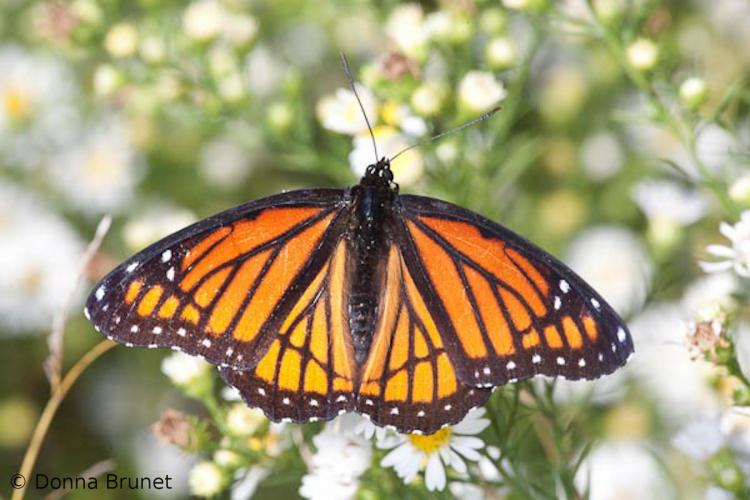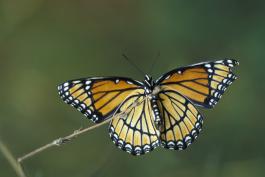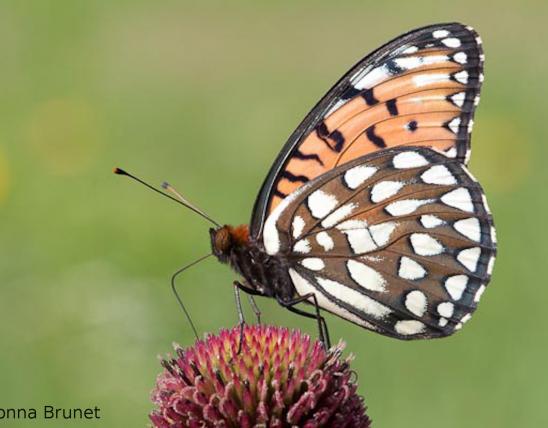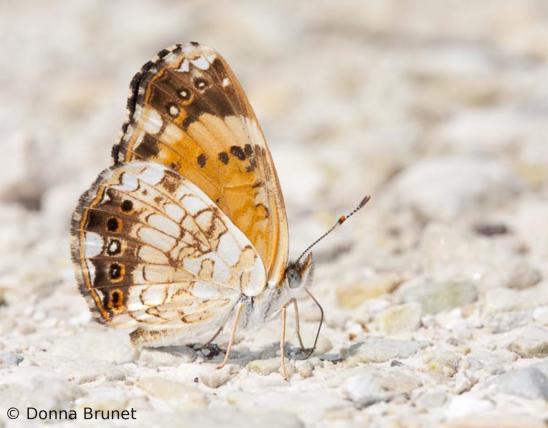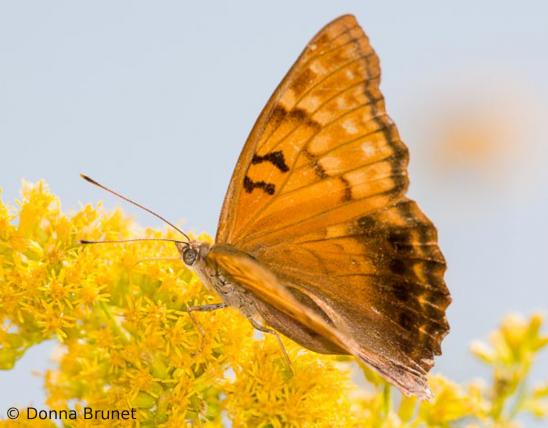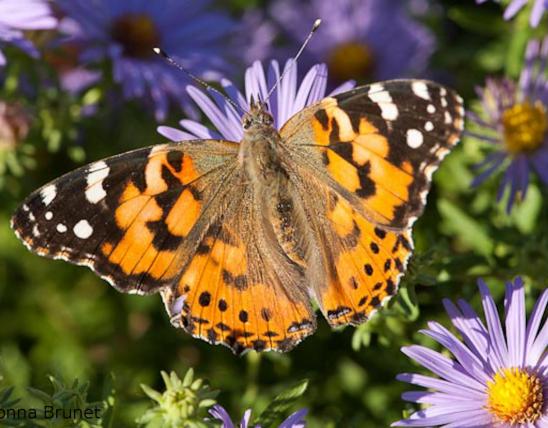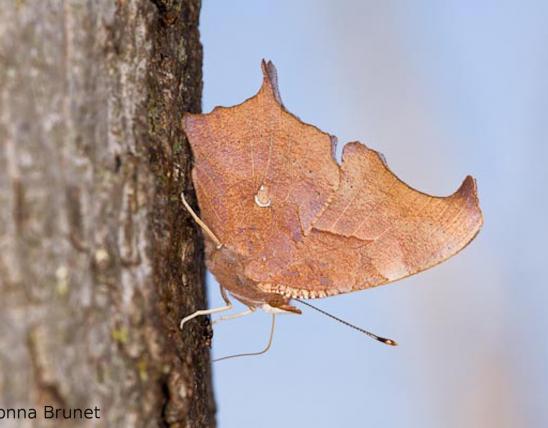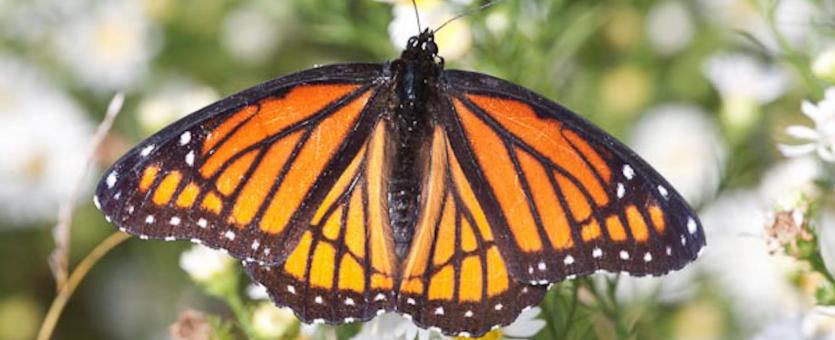
Like the similar-looking monarch butterfly, the viceroy is fairly large, with orange with black veining and black margins with light spots. Viceroys can be separated from monarchs by the line crossing the black hindwing veins and a single row of white spots in the black wing margins.
Viceroy caterpillars resemble bird droppings and are similar to those of the red-spotted purple — humped at the thorax, covered with tubercles, with one longer pair on the thorax, and mottled in shades of brown, brownish yellow, white, and green.
Wingspan: 2¼–3 inches.

Statewide.
Habitat and Conservation
Occurs mostly in wet habitats, but also found in other locations, including gardens. Once considered the classic case of a Batesian mimic — an edible species resembling an inedible one (in this case, the monarch) to avoid predation — the viceroy is now recognized as inedible itself. When more than one toxic species use the same coloration to “communicate” a warning to their predators, it’s called Müllerian mimicry.
Food
Caterpillars feed at night on willow catkins, switching to leaves after flowering. Other trees such as poplar and wild cherry are also used. The adults visit flowers as well as rotting fruit, tree sap, honeydew (the sugary excretions of sap-eating aphids), animals droppings, and mud puddles.
Status
Breeding resident.
Life Cycle
Adults fly from May to October. Females lay eggs, a few at a time, on the leaf tips of host plants. In late fall, the partially grown caterpillars retreat within a rolled leaf tip, and they overwinter in this shelter.
Human Connections
One of the most fascinating branches of biology is the study of animal behavior. The feeding behavior of birds is intertwined with the development of toxicity and warning colors (and sometimes behaviors) of their prey species. Biologists continue to study viceroys, monarchs, and their predators.
Ecosystem Connections
Because of their warning coloration, most viceroys are ignored by predators: A young blue jay, for example, only needs to eat one viceroy or monarch, and vomit, before learning to avoid both of them. Thus the coloration benefits both butterfly species as well as their "educated" predators.
